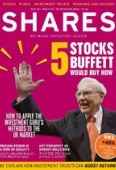Archived article
Please note that tax, investment, pension and ISA rules can change and the information and any views contained in this article may now be inaccurate.
Fund fees in focus

Despite growing pressure on investment houses to reduce fees, there is still a huge gulf between the cheapest and most expensive funds which often can’t be explained by manager skill or outperformance.
Some actively-managed funds charge three times as much as similar funds within their sector yet fail to provide a return that compensates for this fee. In the majority of cases, the high charge results in the fund underperforming.
Surprising results
A fee calculator from financial guidance website Candid Money demonstrates how fees can compound over time and eat into your overall returns.
If you invested £5,000 into a fund with an annual return of 6% and a 0.6% charge, the fund would be worth £5,855 after three years and your investment fees would be £101. If the same fund had a 1.5% charge, it would grow to £5,706 and the fees would be £249.
Invest the same amount over 15 years and the 0.6% charge would result in the fund growing to £11,005 with £978 lost to fees. A 1.5% charge over 15 years would see the fund growing to just £9,677 with the lost investment due to charges amounting a substantial £2,306.
Justin Modray, founder of Candid Money, says a fund manager could justify high charges if they always delivered after-charge returns well above everyone else, but in practice consistent outperformance rarely happens.
‘Managers charging above average management fees are simply being greedy and the only way to stamp out this practice is to avoid them,’ he states.
Even if a fund charges a typical annual management charge (AMC) of 0.75% this is often overshadowed by other costs charged to the fund, such as custodian and administration fees, resulting in the fund having a high ongoing charge figure (OCF). This is particularly the case for small funds.
‘Fund managers have had it too good for too long with minimal price competition in the actively-managed fund arena,’ says Modray.
Recent analysis of US-domiciled funds by Morningstar found the cheapest funds were at least two to three times more likely to survive and outperform their category group than the priciest funds, regardless of the asset class and time period.
Investor control
Cost is just one of five factors that Morningstar looks at when rating funds, but for individual investors it’s a good place to start, according to Morningstar senior analyst Muna Abu-Habsa. She points out there are many factors outside an investor’s control – for example, stock market volatility and a fund manager’s decision to leave – whereas price is constant.
‘The more you can do to manage fees in your favour, the better off you are,’ she says.
Even if a fund manager has a good track record, Abu-Habsa argues that investors will only find out if their high charge was worth it later on, whereas a decision based on fees can be controlled at the outset.
Morningstar upgraded Woodford Equity Income (GB00BLRZQ737) to a Silver rating when Woodford Investment Management announced in April that it was going to absorb all the fund’s research costs rather than passing them on to investors through the OCF. With an OCF of 0.75%, it is 0.1-0.2% cheaper than many funds.
Cheap but good
Ryan Hughes, head of fund selection at AJ Bell, likes Royal London UK Equity Income M (GB00B8Y4ZB91), which has an OCF of 0.66% when bought via a fund platform. It has a 10-year annualised return of 8.67% versus 5.84% for its benchmark, the FTSE All Share Total Return.
‘The fund has been managed for over 10 years by Martin Cholwill who has built up a very strong track record through a disciplined focus on higher-yielding UK equities. Cholwill looks at sustainable businesses that generate significant amounts of cash which gives comfort that those companies will be able to pay and importantly grow their dividends over time,’ says Hughes.
Franklin Templeton cut the AMC on three of its funds, including Franklin UK Equity Income W Acc (GB00B7DRD638), from 0.75% to 0.45% in June, giving it an OCF of just 0.54%. However, Alex Brotherston, head of UK retail sales at Franklin Templeton, explains this is largely because the fund concentrates on blue-chip stocks, which are easy to gather data on. In addition, the fund overweights and underweights stocks rather than using an intensive stock-picking strategy.
‘Small cap funds are more intensive because the managers spend time talking to and visiting companies which might only have one house broker. FTSE 100 companies are very well-researched,’ Brotherston says.
Franklin UK Smaller Companies W (GB00B7FFF708) has a much higher OCF of 0.83%. Abu-Habsa says it is important to look at fund fees within the same category so you can make a fair comparison.
‘Sector-based funds can be expensive; sometimes this is justified, sometimes not. For regional funds, liquidity and trading costs are other drivers of charges,’ says Abu-Habsa. ‘At the same time, investors should also look at fees in absolute terms because that cost will eat into your returns and compound over time,’ she adds.
With an OCF of 1.2%, GAM Star Capital Appreciation US Equity (IE00B5SLLT59) is a lot more expensive than other funds in the North America sector; for example Schroder QEP US Core I Acc (GB0007648347) has an OCF of 0.32%.
Wellington Management, which manages the GAM fund, points out its investment team comprises three portfolio managers supported by six dedicated analysts and a large team of global industry analysts. It says the fund’s alpha generation after fees has beaten the S&P 500 by 0.9% (net) since 1997.
Risk and objectives
Joshua Gerstler, financial adviser and company director at financial advice firm The Orchard Practice, says it’s very important for investors to look at charges, but they should also consider volatility and the level of risk the fund manager is taking with their money.
AJ Bell’s Ryan Hughes agrees that fees shouldn’t be looked at in isolation. He says investors first need to identify the fund or funds that fit with their investment objective. This will be determined by how much risk they want to take and time horizon for investing.
‘Once a shortlist of funds has been identified there is a balance between cost and performance to consider. Investors may be happy to pay a slightly higher cost in return for the skills of a fund manager that has proven to outperform the market over the long term. So while it is important not to pay unnecessarily high charges, the performance and objective of the fund are also important considerations,’ Hughes explains.
Important information:
These articles are provided by Shares magazine which is published by AJ Bell Media, a part of AJ Bell. Shares is not written by AJ Bell.
Shares is provided for your general information and use and is not a personal recommendation to invest. It is not intended to be relied upon by you in making or not making any investment decisions. The investments referred to in these articles will not be suitable for all investors. If in doubt please seek appropriate independent financial advice.
Investors acting on the information in these articles do so at their own risk and AJ Bell Media and its staff do not accept liability for losses suffered by investors as a result of their investment decisions.

 magazine
magazine








